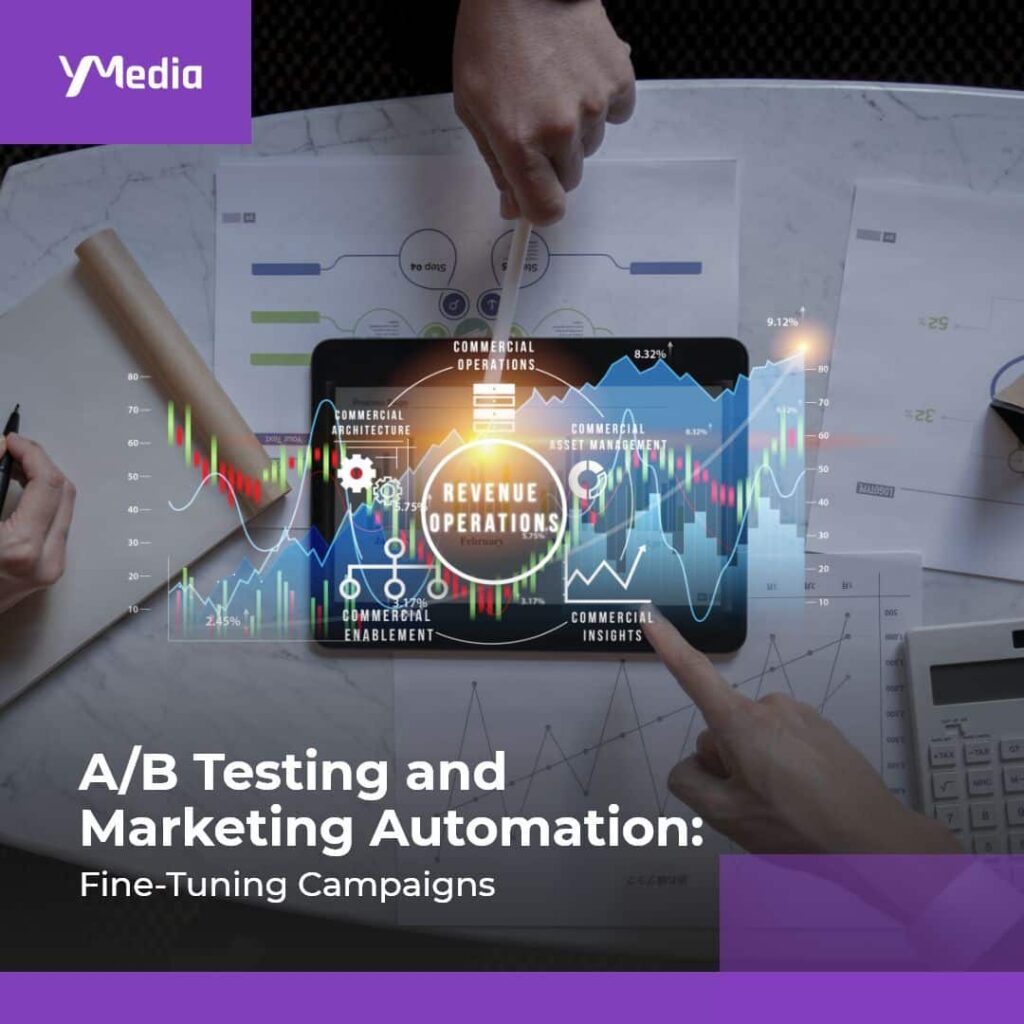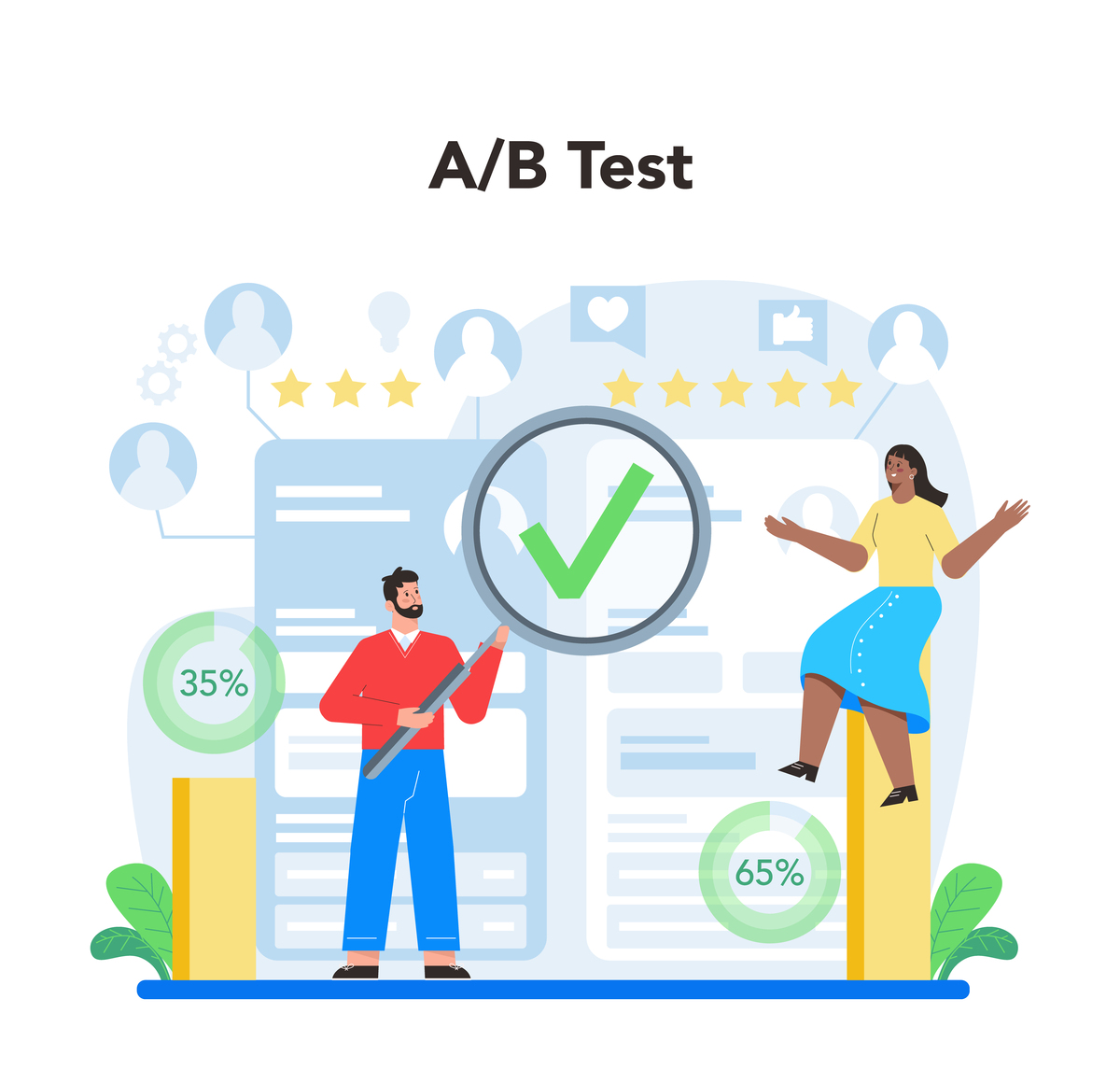A/B Testing in Marketing: Fine-Tuning Automation Campaigns

The success of any marketing campaign hinges on its ability to adapt, optimize, and fine-tune strategies continuously. A powerful combination that’s driving results for businesses across the globe is automation of A/B testing. A/B testing, also known as A/B split testing compares two or more versions of a webpage or email to check which one performs better. Today, we will explore the potential of A/B testing in marketing, highlight its benefits, challenges, real-world examples, best practices, and the future of this dynamic duo in the marketing industry.
What is A/B Testing?
A/B split testing is all about experimentation, comparing versions A and B of a webpage, email, or campaign to gauge which yields better results. Rooted in scientific methodology, it emphasizes the importance of controlled experiments to make data-driven decisions in marketing.
Benefits of A/B Testing in Marketing
A/B testing in marketing can revolutionize your marketing strategy. Let’s see how:
Data-Driven Decision Making
A/B testing empowers marketers to make detailed decisions based on data rather than gut feelings or assumptions. It helps marketers discern which version performs better by comparing all variations of a marketing element (e.g., email subject lines, website landing pages, ad copy, or product descriptions).
This data-driven approach provides clear insights into what connects with your audience, allowing you to refine your strategies for optimal results.
Enhanced Customer Engagement
Engaging your audience is a crucial aspect of successful marketing. A/B testing helps you determine what content, design, or messaging resonates best with your audience, leading to higher engagement. It allows you to design your marketing materials to your customers’ preferences.
Optimal Resource Allocation
A/B testing can help you allocate your resources more efficiently. Rather than investing time and money into unproven strategies, you can focus on the approaches that have demonstrated the best results. This leads to cost savings and maximizes your return on investment.
Continuous Optimization
Customer preferences can change over time. A/B testing in marketing supports continuous optimization, allowing you to adapt and improve your strategies as the market evolves. By continually testing and refining your marketing elements, you can stay ahead of the competition and meet the ever-changing needs of your audience.
Personalization and Segmentation
A/B split testing can be used to create personalized and segmented marketing materials. You can tailor your messages to each group’s unique preferences and needs by testing different content variations for specific audience segments. This personalized approach often results in higher engagement and conversion rates.
Competitive Advantage
By consistently optimizing your marketing strategies, you can stay ahead of competitors. It allows you to respond quickly to market changes and customer behavior, maintaining your edge in your industry.
Challenges in Manual A/B Testing
Manual A/B split testing can be resource-intensive, time-consuming, and often challenging to maintain, especially as your marketing campaigns become more complex. This is where the need for marketing automation becomes evident. Marketing automation offers a solution to the resource-intensive nature of manual A/B split testing by automating many of the repetitive tasks involved.
Let’s delve deeper into the challenges associated with manual A/B testing marketing:
Limited Scalability
As marketing campaigns grow in complexity and scale, manual A/B testing becomes increasingly impractical. It’s challenging to manage and track numerous tests manually, leading to potential oversights, errors, or inconsistencies in the testing process.
Human Error
Manual A/B testing in marketing is susceptible to human error. Marketers may unintentionally introduce biases, inconsistent testing conditions, or data collection and analysis mistakes. These errors can lead to inaccurate results, rendering the entire testing process ineffective.
Time-Consuming
Creating, running, and analyzing A/B tests can consume significant time. Marketers may need to wait for statistically significant results, slowing the decision-making process. In the fast-paced world of digital marketing, delays can result in missed opportunities.
Inconsistent Testing Conditions
Maintaining consistent testing conditions is crucial for the validity of A/B tests. However, manual testing may lead to variations in factors that can affect A/B test results, such as the time of day, test execution, or user interactions. These inconsistencies can render test results unreliable.
Limited Data Analysis
Manual testing may not facilitate comprehensive data analysis. Marketers might miss valuable insights, especially when dealing with large datasets. Automated tools more efficiently handle advanced statistical analysis and data visualization.
Overhead Costs
The manual A/B split testing process can incur overhead costs, including the cost of employing or training personnel, developing custom testing systems, and dedicating resources to the testing process. These costs can be prohibitive for smaller businesses with limited budgets.
Limited Test Variations
Manual A/B split testing may restrict the number of variations that can be tested simultaneously. This limitation can hinder marketers from fully exploring all potential options and finding the optimal marketing approach.
The solution to these challenges lies in embracing marketing automation, which streamlines and enhances the A/B split testing process.
Automated A/B Testing In Marketing

Source | A/B testing in marketing
Automating your A/B tests makes the whole process easier for you. It controls content distribution to your audience, monitors user interactions, and collects data, all while you focus on your core marketing strategy. Marketing automation tools provide detailed analytics on A/B tests. You can quickly identify which version of your content performs better and make real-time adjustments based on the data.
Real-World Examples of A/B Testing in Marketing
Let’s look at some real-world examples of companies using A/B testing marketing for campaign optimization:
Amazon
The e-commerce giant Amazon is known for its sophisticated use of A/B testing in marketing automation. One notable example is how they optimize their product pages.
Amazon tests different variations of product images, titles, descriptions, and pricing to identify which combination drives the highest conversion rates. Their automation tools facilitate this by running the tests and updating product pages in real-time based on the winning variations. This approach has contributed significantly to Amazon’s success in maximizing sales and revenue.
Netflix
The streaming entertainment platform, Netflix relies heavily on A/B testing in marketing automation to enhance user experience. They continuously test content recommendations, personalized emails, and user interfaces to keep subscribers engaged and minimize churn.
Marketing automation helps them execute these tests seamlessly and adjust content recommendations for individual users in real-time based on their behavior and preferences, increasing user retention.
Airbnb
Airbnb, the online marketplace for lodging and travel experiences, uses A/B testing in marketing automation to improve the user experience and drive bookings. For instance, they use AB to test different booking button designs and placement on their website to determine which version encourages more bookings. Automation tools allow Airbnb to make quick adjustments based on the test results, ensuring that the most effective booking process is in place.
Spotify
Spotify, the music streaming service, leverages A/B testing and automation to optimize its recommendation algorithms. They run tests to compare different methods of suggesting music to users. Marketing automation enables Spotify to track user interactions and preferences in real-time, adapting the music recommendations accordingly. This enhances the user experience and keeps users engaged and subscribed to the service.
HubSpot
HubSpot, a provider of inbound marketing and sales software, offers a marketing automation platform that integrates A/B testing capabilities. They use A/B testing in marketing to optimize their marketing campaigns, including email marketing and website content. HubSpot’s platform allows marketers to quickly set up and analyze A/B tests, providing insights into what messaging and content resonates best with their audience.
MailChimp
MailChimp, an email marketing platform, offers A/B split testing features that enable users to experiment with different email campaign elements. Companies like Moz, a marketing software provider, have used MailChimp’s A/B testing automation features to refine their email marketing strategies. They test variations of subject lines and email content and send times to maximize open and click-through rates.
These real-world examples highlight how companies across various industries have harnessed the power of A/B testing in marketing automation to enhance user experiences, increase conversions, and drive revenue.
The Future of A/B Testing in Marketing
As technology advances, A/B testing is expected to evolve. Predictive analytics, artificial intelligence, and machine learning will play a more prominent role in making data-driven decisions, and automation will become even more sophisticated, offering new ways to fine-tune marketing campaigns and optimize results.
Keep up with the top marketing-related updates with yMedia!